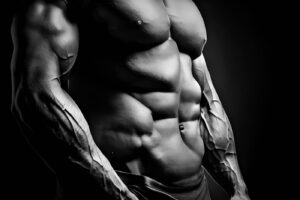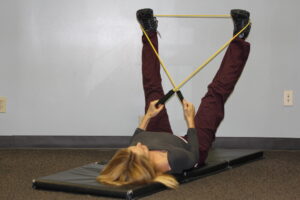Introduction
Welcome to the world of fitness! If you’re just starting your journey or looking to up your game, there’s something crucial you need to know, and it’s not just about how many reps you can do or miles you can run. It’s about “Fitness, Rest, and Recovery.” Yes, the time you spend not working out is just as important as the time you do. This blog post is all about the significance of balancing vigorous exercise with adequate rest. By the end, you’ll see why hitting the pause button is key to achieving your fitness dreams.
The Basics of Fitness Recovery
Understanding Fitness Recovery
Diving into fitness, it’s easy to get caught up in the go-go-go mindset. But let’s hit the brakes for a moment and talk about recovery. Recovery is the yin to your workout’s yang, the cool down after the heat. It’s a critical part of the fitness puzzle that helps you get stronger, faster, and fitter.
Why Recovery Matters
- Muscle Repair: When you work out, you create tiny tears in your muscles. Recovery time is when your body repairs these tears, making your muscles stronger than before.
- Prevents Burnout: Constantly pushing your body without rest can lead to burnout and fatigue, making it harder to stick to your fitness goals.
- Reduces Injury Risk: Overtraining without proper rest increases your risk of injuries, setting you back on your fitness journey.
Incorporating rest days and recovery techniques into your fitness routine isn’t just a good idea—it’s essential. It’s about giving your body the time it needs to heal, adapt, and grow stronger.
The Role of Sleep in Optimal Recovery

Sleep allows muscle tissue time to recover between workouts.
Sleep: The Foundation of Fitness Rest
Now, let’s zero in on a superstar of recovery: sleep. It’s not just about catching Zs; it’s about giving your body the uninterrupted downtime it needs to work its repair magic. Sleep is when the bulk of muscle repair, growth hormone release, and mental rejuvenation happens.
How Sleep Fuels Recovery
- Muscle Growth: Growth hormone, essential for muscle repair and growth, is released during deep sleep stages.
- Mental Refresh: Quality sleep is like hitting the reset button for your brain, crucial for motivation, focus, and maintaining a positive mood.
- Energy Replenishment: Adequate sleep ensures you have the energy reserves needed to tackle your next workout with full intensity.
Tips for Enhancing Sleep Quality
- Consistent Sleep Schedule: Try to go to bed and wake up at the same times every day to regulate your body’s internal clock.
- Pre-Sleep Routine: Establish a calming pre-sleep routine to signal to your body that it’s time to wind down. This could include reading, a warm bath, or meditation.
- Optimize Your Sleep Environment: Ensure your bedroom is conducive to sleep—cool, dark, and quiet are key.
By prioritizing sleep as part of your recovery process, you’re setting the stage for optimal fitness gains. Remember, when it comes to fitness, rest, and particularly sleep, are not just part of the process; they’re foundational to your success.
Nutrition’s Impact on Post-Exercise Recovery
Nutritional Strategies for Effective Recovery
After a grueling workout, your body is in a state of repair, and what you fuel it with can significantly influence your recovery speed and quality. “How proper nutrition aids in post-exercise recovery” isn’t just a fancy saying—it’s backed by science. Nutrition plays a pivotal role in replenishing energy stores, repairing muscle tissues, and reducing inflammation.
Key Nutrients for Recovery
- Proteins: Essential for muscle repair and growth. Aim for a protein intake of 0.2–0.4 grams per kg of body weight post-workout.
- Carbohydrates: Helps replenish glycogen stores. The ratio of carbs to protein should be 3:1 for optimal recovery.
- Fats: Although not needed immediately post-workout, healthy fats are crucial for long-term recovery and hormone regulation.
Hydration: Replacing fluids lost through sweat is crucial. Dehydration can slow the recovery process and impair performance in subsequent workouts.
| Nutrient | Role in Recovery | Recommended Timing | Examples |
|---|---|---|---|
| Protein | Muscle repair and growth | Within 30 minutes post-workout | Whey protein, chicken, tofu |
| Carbohydrates | Replenish glycogen stores | Within 30 minutes to 2 hours post-workout | Banana, rice, quinoa |
| Fats | Hormone regulation and inflammation reduction | Within meals post-recovery period | Avocado, nuts, olive oil |
| Water | Hydration | Continuously, post-workout | Water, electrolyte-replenishing drinks |
By following these nutritional strategies, you can significantly enhance your recovery, ensuring you’re ready to hit your next workout with full force.
Mental Health Benefits of Incorporating Rest

Mindful Rest: The Mental Aspect of Recovery
In the hustle of hitting fitness goals, the mental health benefits of rest and recovery often go unnoticed. Incorporating rest into your fitness routines not only aids in physical recovery but also supports mental well-being. “Mental health benefits of incorporating rest into fitness routines” is about recognizing that mental recovery is as crucial as physical recovery.
Why Mental Rest Matters
- Stress Reduction: Regular rest helps in lowering stress levels by reducing cortisol, the body’s stress hormone.
- Improved Focus and Motivation: Adequate rest can rejuvenate your mind, improving concentration and renewing motivation for training.
- Emotional Balance: Rest and recovery activities can promote emotional well-being, reducing the risk of burnout and exercise fatigue.
Incorporating Mindfulness and Relaxation
| Activity | Mental Health Benefit | Suggested Frequency |
|---|---|---|
| Meditation | Reduces stress, improves focus | Daily, 10-20 minutes |
| Yoga | Enhances mood, reduces anxiety | 2-3 times per week |
| Leisure Activities | Boosts overall happiness, reduces burnout | Weekly |
Engaging in mindfulness practices and relaxation techniques can significantly enhance the mental health aspects of your recovery, making your fitness journey more holistic and sustainable.
Active Rest Strategies in a Fitness Plan
Active Rest: A Comprehensive Fitness Approach
Active rest, the concept of engaging in low-intensity activities on rest days, is a critical component of a well-rounded fitness plan. It’s about “Strategies for active rest in a comprehensive fitness plan,” allowing your body to recover while staying slightly active to promote blood flow and reduce stiffness.
Benefits of Active Rest
- Enhanced Recovery: Light activity increases circulation, helping to shuttle nutrients to muscles and speed up recovery.
- Reduced Muscle Stiffness: Gentle movement can alleviate muscle tightness and soreness.
- Maintained Fitness Habits: Active rest keeps you in the routine of moving your body, supporting long-term fitness adherence.
Active Rest Activities
| Activity | Intensity | Recovery Benefit |
|---|---|---|
| Walking | Low | Enhances blood flow, reduces stiffness |
| Stretching | Low | Improves flexibility, promotes relaxation |
| Swimming | Low-Moderate | Low-impact, whole-body exercise |
Incorporating active rest days into your fitness regimen ensures that your recovery is effective, keeping you on track towards your fitness goals without overtaxing your body.
Science Behind Muscle Repair During Rest
Muscle Repair: The Science of Rest
Understanding “The science behind muscle repair during rest” is crucial for anyone serious about their fitness. When you work out, especially during resistance training, you create microtears in your muscle fibers. It’s during rest that your body gets to work, repairing these tears, which is how muscle growth occurs. This process, known as muscle protein synthesis, is significantly influenced by rest and proper nutrition.
Key Components of Muscle Repair
- Protein Synthesis: The body repairs damaged muscle fibers by fusing them, which increases the mass and size of muscles.
- Hormonal Role: Hormones like testosterone and growth hormone play a crucial role in muscle repair, especially during sleep.
- Nutrient Delivery: Blood flow to muscles increases during rest, delivering essential nutrients needed for repair.
Optimizing Rest for Muscle Repair
| Strategy | Benefit | Implementation |
|---|---|---|
| Adequate Sleep | Maximizes growth hormone release | 7-9 hours per night |
| Post-Workout Nutrition | Provides necessary building blocks for repair | Protein and carbs within 30 minutes of exercise |
| Active Recovery | Enhances blood flow, promoting nutrient delivery | Light activities like walking or yoga |
Incorporating these strategies can significantly impact the effectiveness of muscle repair during rest, leading to more efficient recovery and growth.
Prevention of Workout-Related Injuries Through Recovery

Injury Prevention: The Role of Recovery Techniques
Effective recovery isn’t just about muscle growth; it’s also about “Prevention of workout-related injuries.” Proper recovery techniques can significantly reduce the risk of injuries by allowing the body time to heal and strengthen. This includes not only muscle fibers but also tendons, ligaments, and joints, which are all susceptible to overuse injuries.
Injury Prevention Through Recovery
- Rest Days: Essential for allowing comprehensive body recovery, reducing the risk of overuse injuries.
- Active Recovery: Low-intensity activities can help maintain mobility and reduce stiffness without overloading the muscles.
- Stretching and Mobility Work: Increases flexibility and range of motion, further reducing injury risk.
Recovery Techniques Comparison
| Technique | Injury Prevention Benefit | Recommended Frequency |
|---|---|---|
| Stretching | Increases flexibility, reduces muscle tightness | Daily, especially post-workout |
| Foam Rolling | Improves blood flow, reduces tissue tightness | 3-4 times per week |
| Cold/Heat Therapy | Reduces inflammation, accelerates muscle recovery | As needed, depending on soreness or injury |
Implementing these recovery techniques can play a pivotal role in preventing injuries, ensuring that you can train consistently and safely over the long term.
Impact of Hydration on Effective Fitness Recovery

Hydration and Recovery: Staying Refreshed for Results
“The impact of hydration on effective fitness recovery” cannot be overstated. Hydration plays a critical role in almost every aspect of recovery, from regulating body temperature and maintaining joint lubrication to facilitating nutrient transport to muscles. Dehydration can significantly hinder the body’s recovery process, leading to prolonged muscle soreness, decreased performance, and increased risk of injury.
Why Hydration Matters for Recovery
- Nutrient Transport: Water helps transport nutrients to your cells, aiding in the repair and rebuilding of muscle tissue.
- Toxin Removal: Adequate hydration aids in flushing out toxins and waste products from the body, speeding up recovery.
- Temperature Regulation: Staying hydrated helps regulate body temperature during and after workouts, preventing overheating and related issues.
Hydration Strategies for Optimal Recovery
| Strategy | Benefit | Guidelines |
|---|---|---|
| Drink Regularly | Ensures consistent hydration | 2-3 liters per day, plus extra during workouts |
| Electrolyte Balance | Replaces salts lost through sweat | Include electrolyte-rich drinks post-workout or during intense sessions |
| Monitor Hydration | Prevents dehydration before it starts | Check urine color; aim for pale yellow |
Maintaining proper hydration is a simple yet effective way to enhance your recovery, ensuring you’re always ready for the next challenge.
Balancing Rest and Intensity for Sustainable Progress
Sustainable Fitness: Finding the Balance
Sustainable fitness, rest, and recovery progress requires a delicate balance. “Balancing rest and intensity: A key to sustainable fitness progress” is not just a strategy; it’s a necessity for long-term success and health. Overtraining can lead to burnout and injuries, while undertraining may result in stagnation and demotivation.
Strategies for Balancing Rest and Intensity
- Periodization: Varying your training intensity and volume over time allows for adequate rest and prevents plateau.
- Listen to Your Body: Recognize the signs of fatigue and adjust your training accordingly.
- Incorporate Active Rest Days: Engage in low-intensity activities on rest days to keep active without overstraining.
Rest vs. Intensity: A Comparative Overview
| Aspect | High Intensity | Adequate Rest |
|---|---|---|
| Risk of Injury | Higher due to increased strain on muscles and joints | Lower, as the body has time to repair and strengthen |
| Mental Fatigue | Can lead to burnout if not balanced with rest | Reduced, allowing for mental recuperation |
| Progress | Rapid improvements initially, but can plateau without rest | Steady, sustainable progress with lower risk of setbacks |
Balancing high-intensity workouts with sufficient rest is critical for avoiding injuries, maintaining mental well-being, and ensuring steady progress.
Circadian Rhythms and Their Influence on Fitness Rest
Timing Matters: Circadian Rhythms and Recovery
Your body’s internal clock, or circadian rhythm, plays a significant role in determining the effectiveness of your rest and recovery periods. “Circadian rhythms and their influence on fitness rest patterns” highlight how syncing your workout and rest schedules with your body’s natural rhythms can enhance recovery and overall fitness results.
Understanding Circadian Rhythms
- Peak Performance Times: Most people experience peak physical performance in the late afternoon.
- Hormone Release: Growth hormone, crucial for muscle repair, is predominantly released during sleep.
Aligning Fitness with Circadian Rhythms
| Time of Day | Activity | Rationale |
|---|---|---|
| Morning | Light to moderate exercise | Aligns with rising cortisol levels |
| Afternoon/Evening | High-intensity workouts | Coincides with peak body temperature and muscle function |
| Night | Rest and recovery | Optimizes growth hormone release during sleep |
Adjusting your workout and rest schedule according to your circadian rhythms can optimize your body’s natural processes, leading to more effective recovery and improved performance.
Conclusion
Embracing the principles of rest and recovery in your fitness routine is crucial for long-term success. By understanding the roles of sleep, nutrition, and the body’s natural rhythms, you can enhance your recovery processes, prevent injuries, and achieve sustainable fitness progress. Remember, fitness is a marathon, not a sprint, and prioritizing rest is key to crossing the finish line in good health. Let’s prioritize rest, listen to our bodies, and enjoy the journey to peak fitness.








